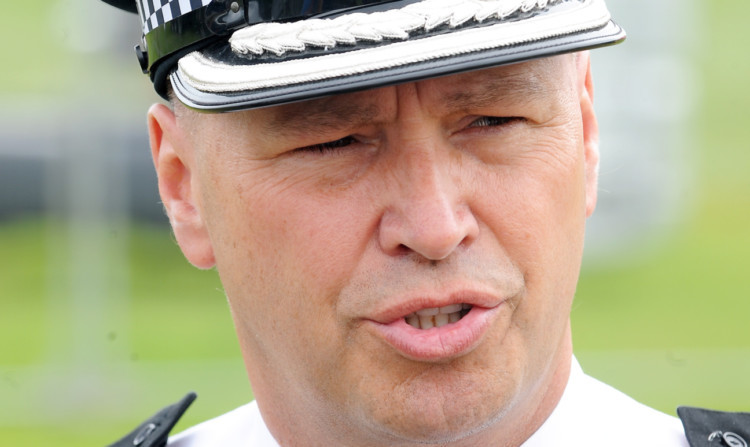
A senior police chief has called for a major rethink on the number of councils and health boards in Scotland.
David O’Connor, president of the Association of Scottish Police Superintendents, said merging the country’s eight forces can act as a role model for the rest of the public sector.
The Chief Superintendent claimed people care more about the level of service they get from police forces or councils than they do how they are organised locally.
The call came as public spending body Audit Scotland last week said local authorities must do more than simply cut staff to find savings.
In 2012, Justice Secretary Kenny MacAskill said the large number of councils and health boards was “not tenable”, but the Scottish Government quickly distanced itself from the comments, claiming it had no plans to merge the organisations.
But Chief Superintendent O’Connor claims the time has come for a far-reaching review of the public sector’s structure in the wake of the police and fire service shake-up which got under way a year ago.
He said: “We are one year into the rationalisation of the police service and it is going well.
“There are savings being made and the frontline has not suffered as a result.
“It would be unfair on the police and fire services if we didn’t ask the same questions of the rest of the public sector.
“If we can prove moving to a single force can be done relatively pain free, then you have to ask what next?
“Alex Salmond was right when he said ‘bobbies not boundaries’ and it is an approach which could benefit the rest of Scotland’s public sector.
“I appreciate it is a lot more political and it is much bigger organisations we are talking about, but our experience with the police is that people don’t care what badge is on the uniform, they care about the service being provided.
He added: “It is a discussion which needs to begin and I am talking right across the public sector, not just the number of councils or health boards.
“Look at sheriffdoms why do we need six sheriffdoms for example?
“I appreciate this might be lighting the blue touch paper, but if it can work for the police then it can work elsewhere.”
Council umbrella group Cosla has long resisted any move to slim down from the current 32 local authorities and wants the existence of local authorities enshrined in law.
Scottish Labour last week unveiled plans to hand councils more revenue-raising powers.
Turnout for council elections is now barely 40%, indicating an issue with the engagement between householders and the people elected to look after the things which affect their everyday lives education, roads and bins.
Thinktank Reform Scotland has said the number of councils should be reduced to 19, but incorporating the 14 regional health boards and armed with greater fiscal powers.
The model would be similar to that used in European countries such as Norway, which operates a tax-payer funded system.
However, such a radical move would spark a backlash according to one leader of a major local authority, who asked not to be named.
He said: “Merging local authorities or health boards is a completely different kettle of fish to the police forces.
“For a start people have a much closer affinity to councils and health boards because they are much more closely involved in people’s lives.
“They don’t just turn to them in crisis like you do with the police.
“There could be some movement around the edges, but there is no appetite for this politically and I really doubt there is any appetite for it among voters.”
Scotland’s 32 councils collectively spent almost £21 billion in 2013, but have been forced to find savings worth hundreds of millions of pounds in recent years.
The Audit Scotland report said the savings have been made mainly by cutting staff numbers but this measure is not sustainable in the longer term.
The report pointed to initiatives such as East Ayrshire and South Ayrshire councils setting up a single service to maintain their roads.
Accounts Commission chairman Douglas Sinclair said: “Finances remain tight and councils anticipate further budget reductions.
“Councillors need to have an open mind on how they organise the services they provide. That means looking afresh at what people need, how it can be delivered and who can best deliver it.”

Enjoy the convenience of having The Sunday Post delivered as a digital ePaper straight to your smartphone, tablet or computer.
Subscribe for only £5.49 a month and enjoy all the benefits of the printed paper as a digital replica.
Subscribe